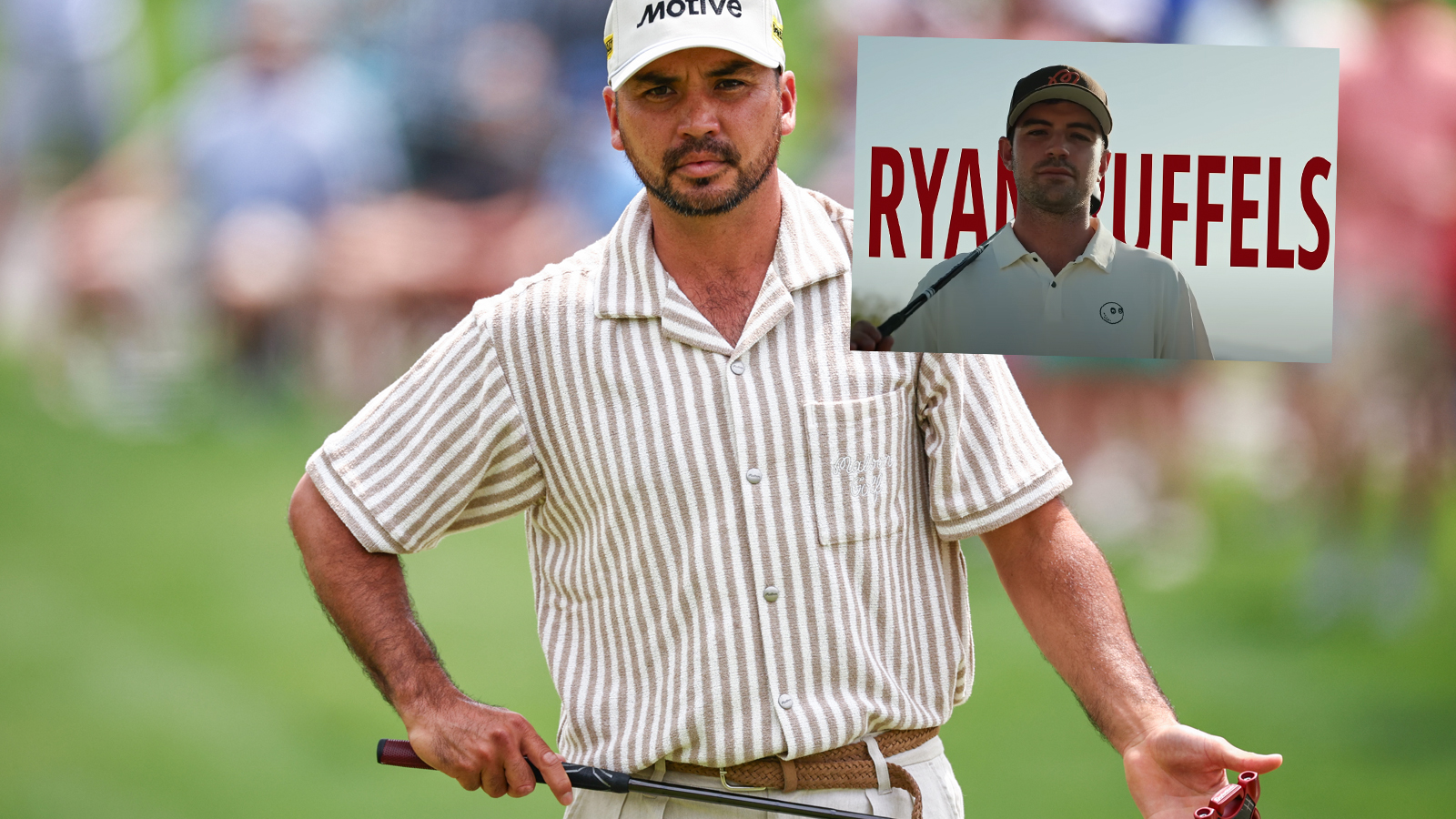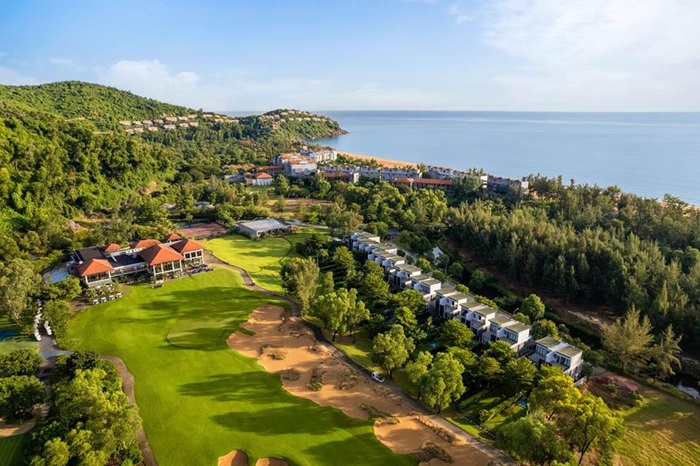Gavin Kirkman: Standing Strong – Australian Golf Digest

- by Admin
- October 23, 2024

PGA of Australia chief executive Gavin Kirkman on the state of tournament golf, answering to nearly 3,000 members and the ever-changing role of a PGA professional.
Has the role of a PGA professional ever been this diverse? Surely not, which is why the business side of the professional realm of the game has evolved as much as any within golf. The modern Professional Golfers Association is a sea of different and expanding skills – and has become so much more than merely the ability to navigate a golf course in a low number of strokes and teach others how to do the same. Gavin Kirkman, whose association with the PGA of Australia dates back 22 years – the past seven as CEO – has witnessed the entire transformation. From his time running pro-ams in Queensland to now negotiating with the titans of golf’s global circuits, he exudes an equanimity that, coupled with his longevity, must put Australia’s 2,000-plus PGA members at ease. Kirkman wears many hats, though – today more than ever as the PGA Tour of Australasia seeks to grow both within its own space and as a part of the world of professional golf.
Australian Golf Digest sat down to chat with Kirkman ahead of the Summer of Golf to discuss Australia’s place in the global picture, our local circuit – from pro-ams to four-round tournaments – the lot of today’s club professional, and more.
▶ ▶ ▶
Australian Golf Digest: Which recent accomplishment by the PGA of Australia are you most proud of?
Gavin Kirkman: As a CEO, to change the business model of the PGA, to lead with our tour, to commercialise our tour and then return surplus back into the vocational membership.
The vocational membership are the heartbeat of the game. I remember Peter Thomson always said to me – the first thing he asked when I got the job was, “How are our members at the coalface of the game?” And for a lot of years when the tour had the uncertainty of it, it was, “We’re all going well.” But when we amalgamated in 2007 and took ownership of the PGA Tour of Australasia, there were years that we had to commercialise and bring the tour back to break even. The board that come into play and gave me the support to build a tour with the vision of Nick [Dastey] and Kim [Felton], and with strong commercial support, we’ve been able to change our business model. We’ve now got a tour that’s become sustainable, and when we make a surplus out of the tour, we invest that back into the consolidated brand of the 113-year PGA of Australia.
That’s something I’m really, really proud of in my first seven years now as the CEO. That also had a lot to do with my predecessors building some platforms, but I’ve come in at a time pre-COVID and then post-COVID and experienced a boom in the sport.
So that’s one. Alongside [WPGA Tour of Australasia chief executive] Karen Lunn, we started talking five years ago to bring the men’s and women’s tours together, and we had to build trust. So that is also a big accomplishment.
What sits on top of that is sitting here in a state-of-the art office, working alongside Golf Australia. Who would’ve thought that we would be doing this? It’s something I like to speak about a lot. There’s our global partners on PGAs and tours saying, “What are you guys doing down there? How does that work?” And it’s not easy, but you know where you want to finish. Working with James [Sutherland, Golf Australia’s chief executive] and Karen, we’ve all got a common goal that we just want to keep making the sport better, so we know where we want to finish. We’re in a much better space now, but we know we’ve still got a lot of work to do.
▶ ▶ ▶

How have board meetings changed for you compared to, say, a year or two ago?
We go into a board meeting and we’ve got clear strategic plans. The PGA’s strategic plan is aligned to the Australian Golf Strategy, which when you look at the five pillars, or the three pillars and the two enablers, you want to start off with: we want to tell our story better, which I feel we are. And it’s a consistent story, it’s not a competing story anymore. And that’s just not amateurs and pros, it’s also women and men, and so forth. We’ve already proven that working together can raise all the energies, profits and efficiencies within both organisations. So a board meeting now is the report on the achievements. We will have challenges. We will report on projects, but nearly every project we are reporting on now is a collaborative project, whether it’s a joint website, whether it’s an education offering, whether it’s a golf summit, whether it’s a Summer of Golf – we’re not just talking about PGA.
I say I’ve got the best job in golf because I get to look at the business side of it, I get to service 2,500-plus vocational members and then we’ve got another 300 to 400 tournament members, and I get to talk and develop pathways and playing opportunities for them. All our meetings are very upbeat now.
▶ ▶ ▶
What is the prevailing sentiment you’re hearing from your membership about the Saudi PIF/PGA Tour attempts at unification and our tour’s alliance with the DP World Tour and, by association, PGA Tour?
When we set out, when all this happened, we’d signed our strategic alliance with the DP World Tour that feeds through to the PGA Tour. Prior to that, we were part of the Federation of Tours. When everything started to come up, our members said, “Well, why aren’t you talking to LIV?” And we had discussions with LIV, but through our board – it wasn’t a management or administration [decision] – our board decided that [after] we’d listened to our members and our members wanted us to build a tour that created pathways to global tours, whether it was Japan Challenge Tour, DP World Tour, Korn Ferry Tour to the PGA Tour, they wanted to play major golf championships and they wanted to play Presidents Cup and represent at the Olympics.
If that’s the pathway, could we have done that through LIV? Could we have taken a cheque? We couldn’t have. I think we had to align with the tours that had the same vision and strategy as us, but work with those tours to get more support and say, “We need your help,” which I don’t mind asking, “to develop this tour.” By doing that, they gave us good guidance on commercial, they helped us put together a production to get a broadcast platform for our events and they’ve supported us where needed to build the tour we have. We are now boasting 19 events on the schedule this season, increased prizemoney and we’re going to broadcast 16 of those events. Well, we haven’t broadcast 16 events in Australia since the halcyon days when Greg [Norman] and all the [top golfers] would come out and play.
We had to get the members, 1) engaged, but then trust that we had a vision, we’d built a plan and then we had to implement and deliver on the plan. I think that’s where the members are more engaged.
It was twofold with the broadcast platform: to grow the profile of our membership and allow them to become like an NRL or an AFL player – if they played well, they would get the profile and they may be able to commercialise that profile. Min Woo Lee, I know he’s a global star now, but we’ve got to remember he won the Victorian Open that gave him that pathway onto the DP World Tour, and the rest is: he’s now a superstar; everyone wants to see Min play. That’s our goal. The other thing is, by helping us build that platform, we’ve been able to attract commercial partners that can see value in our tour.

▶ ▶ ▶
You mentioned Greg Norman. When did you last speak with him?
I have to speak to him once a year. One of the things that everyone thought with Greg was, Would we change the Greg Norman Medal?
Again, we had a good discussion with the board. When we created the Greg Norman Medal, we had the greats with us still alive, Peter [Thomson] and Kel [Nagle]. And when we decided, Whose name was it? The Peter Thomson Medal? They supported that Greg was our best current player. He left a legacy on what he did on the golf course, he opened the doors. So many pros got the opportunity to play for a lot of money because of Greg Norman and his profile and his results. So that’s something that has never changed. The Greg Norman Medal is still awarded every year, so he leads the judging panel.
▶ ▶ ▶
What can you say to the average Australian golf fan that will give them confidence that the strategic alliance was the right choice?
They’re seeing more golf. The great Aussie players playing on LIV, our bylaws or regulations allow those players still to come home and play in Australia. So we haven’t stopped fans from seeing the best Aussie players. There’s more golf now available for them to support their home tour.
The negative that I do get from time to time is always, “How can you bring the field of golfers down that LIV Golf brings?” We just don’t have the economics to do that. If we did, we would. We haven’t given up on getting the best players to come to Australia, because when we’re sitting at the table with the DP World and PGA Tour, we always sell that we have some of the best golf courses globally. We have two or three in the Top 100, so it says we bat well above our weight.
We have the capabilities to deliver great events now. We have a full-time events team, we have a production crew, we can deliver a world-class event, and we keep building players that they commercialise. We’re a great breeding ground for golfers. I think the exciting part is for us to keep building a home tour for the fans, for them to engage directly, but build events that have entertainment more so than the traditional golf event. So we’re very mindful that when we’re producing events for broadcasts that it’s not just another event. We’ve just done a complete review, so you will see some different commentary, you’ll see some different ways of presenting the events this Summer of Golf.
▶ ▶ ▶
What benefits does the game in Australia have that it didn’t have prior? And outside the places in The Open, etc. what are the quantifiable benefits to Australian golf?
We’re not finished this framework and what we’re building here, so as the tours continue to change and where our strategic alliance is with DP World Tour… we’re just trying to get players from other countries to come down and experience Australia, learn about Australia and play. Even some US players have come down from time to time because if they’re looking at a pathway, with the saturation of great players in the US, some will come down and say, “Well, I could come down and play well in Australia, pick up a DP World Tour card and have a good season, or finish top-10 and get second-stage exemption on the Korn Ferry Tour.”
▶ ▶ ▶
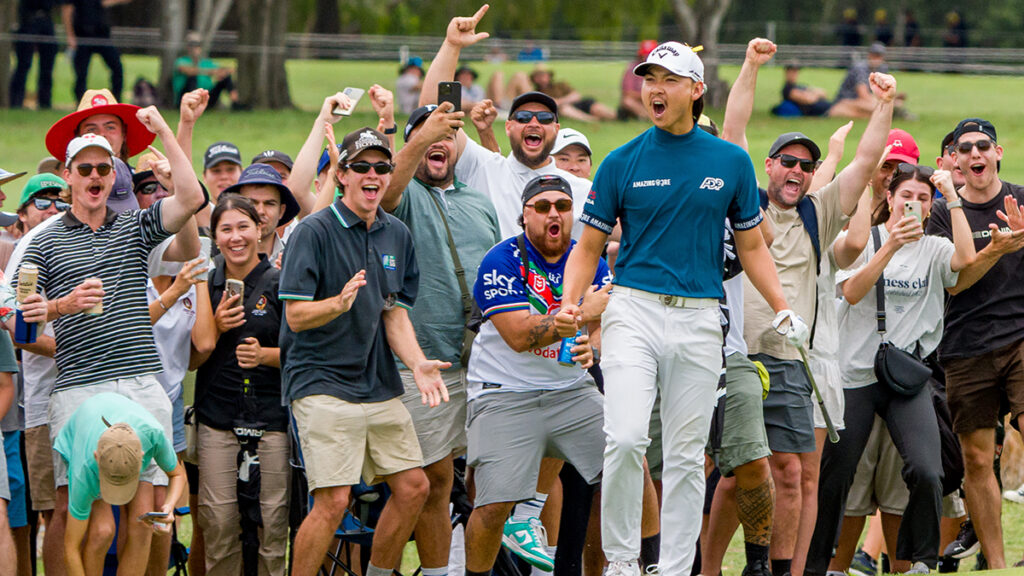
Just to pick a number, the 50th-ranked player on our PGA Tour of Australasia last season didn’t really make what you might consider a reasonable amount of money in the current economic climate. Several players have walked away from competitive play because they can’t make enough money. What needs to happen to stem the tide?
That’s a really good question, and that’s where we’ve got the players leaning in. So we’ve got our minimum prizemoney of about $200,000 – I think we have one at $70,000 – but we went a long period of time where [the minimum was] $100,000, $125,000. We want to get our minimum to $200,000 to $250,000, and even talking at board level the other day, we’d like to get it to $300,000. So that’s allowing players to play well and earn a living.
There’s two methods with being a tour member. I think they know what they’re getting into when they go out there – it’s unlike other sports where you just get a contract and you get a job. When you talk to the great players or the more statesman players, like the Peter Fowlers, the Peter O’Malleys and Rodger Davis, every year they had to find a job. And I used to say, “What do you mean by that?” And they’d say, “I had to find a tour to play on. I had to play well, get my category and find a tour to play on.”
We’ve got a lot of young players that really have to play well, and that’s what we’ve tried to build: a sustainable tour at home. We’d like to get it to 22 events, so we’re having growth every year, and then the players that will then venture and play are the players that are playing well. The women’s tours globally have got some of the same problems. When you get onto the PGA Tour now, there’s a minimum amount of money you get before you start playing. You get a ‘bank’ and then as you win your money, you return that to the tour. That would be an ultimate position to get in, but it’s a lot more commercial work to do and partner work to do.
▶ ▶ ▶
Is it more commercial partners, or is that an overly simplistic answer?
There’s two ways you could look at that. You could have more partners, but if we had one or two really big events that made a really good surplus, you could invest that surplus into the rest of your tour. I don’t think every event will be like a cookie-cutter where they’re all going to perform the same. As I said, a sustainable event is when the venue and the region – when everyone does well. So we’ve got to ensure that a good event, whether it’s a men’s or women’s event, everyone’s got to win. Our job is to produce the players and get the players to play well, which they do – they present well, they play well, they give a great experience. We’ve got to build everything around them. I think we’re on our way now. We’ve got the framework in place and then we’ve got the major tours that are supporting us to do that.
▶ ▶ ▶
Is another way of interpreting that to say that each event needn’t be an economic success on its own? Can two or three big events prop up the ones underneath?
Exactly. If the number’s 19 at the moment and we want to get to 22, when you bring a new event on you’re looking for seed funding or I’m saying to our board, “We’ve got to invest into this event because the first year you are laying foundations, you’re building relationships.” So you’ve got to make sure that the business is set up to invest into a new event. That’s what we’re doing with the WPGA Championship. We’re investing into it – time, energy. We’ve got a lot of good ambassadors wanting this event to work, and you’ll be really happy to see who’s coming to support us, especially with women’s sport at the moment. But at the end of the day, you’ve got to take some risk and we’re in a position now that we can take some risk within the organisation for the men’s tour or the women’s tour to build new events. But then you’ve got to make them sustainable; they’ve got to be good entertainment and we’ve got to give value back to the partners.
▶ ▶ ▶
We’re also hearing of waitlists of 40-50 pros for pro-ams, due to the shortage of main-tour events. Do we need a secondary circuit?
It’s a really good question. I’ve just been around the country for the member forums and this came up. I said to the vocational members, “If you could get into a pro-am, who would play?” Because they’re all that busy. And 50 percent of the room – in the three big states I had 120, 130 members sitting in the room – and 50 percent said, “I still want to play.” Then the clubs are saying they’ve been spoilt for a long time where they’ve got tour players playing in their events, but now there’s tour events on. For example, let’s say that the most popular pro-am in Brisbane is on the third week of October. Well, that’s when all the tour players are in Perth. So if we put that event on at that club then, they’re going to need vocational members. But they’ll say, “We want the ‘young guns’,” but they’ve now got 18 weeks of tour events.
So the pro-am product, I’ll call it, needs to go through a little bit of a review to work out which model is right, the balance of vocational versus tour pro-ams, because some players can pick up some prizemoney playing pro-ams that help subsidise their tour [earnings]. However, is that what we want? Do we want pro-am players, or do we want tour players? So there’s a balance. And Nick and Kim’s vision was always to provide four-round playing opportunities, because if we’re going to get our players ready to go overseas to play on global tours, shooting 65 in a pro-am isn’t going to get them ready to go and play on the big tours.
The pro-am model, the pro-am series is something that we’re working on and we’re listening. The pro-ams are fully underwritten by the clubs, so we’ve got to listen to what the clubs are looking for as far as balance of players and the experience. You’ve just said that there’s a big wait list – I can give you lists of pro-ams where we didn’t deliver enough pros, and that comes down to that scheduling. When I get involved, a manager at a club will say, “Gavin, I’ve run this event with the PGA for 15 years, and you can only deliver me 23 pros this year. And you’ve put a new event on top of my date.” And you’re thinking, Well, a four-round event for $250,000 broadcasted against a $15,000 or $20,000 pro-am? I’ve really got to take your date off you.
There’s a little bit of work going on with that. Then, to complement, you’ve got the PGA Legends Tour and that’s just booming. It’s a little bit of, Well, we’ll do a Legends event and take an event off the pro-am series. But there’s a balance. The work done by Kyle Francis and then Rodger Davis and Phil Boulton, there was a lot of energy that went into establishing the Legends Tour.
I started in the PGA in 2002, and one of my first jobs was to do a senior pro-am. There were only nine in the country and four were in Queensland, and this one was at Redland Bay. I had two people that were late onto the tee, Charlie Earp and Paul King. I said to Charlie the other day, “You were having a quiet drink in the bar and a sandwich, and when I said, ‘Charlie, you’re required on the 10th tee,’ you said, ‘Do you normally disrupt people while they’re warming up?’”
There’s 70-plus events on the Legends Tour playing for $2 million in prizemoney, but I can tell you, sure, Andre Stolz and a few of them are making some good money, but the PGA Legends Tour is more about lifestyle and just keeping them engaged.
They deliver a wonderful experience. Some of their players may shoot 75, but the guest in that group – I don’t like calling them amateurs – the guest that got to play with that pro for four-and-a-half hours got tips, they got stories and they got to sit down and talk more about their knowledge. So it’s a wonderful experience they deliver. The pro-am series is the same, but one complements the other.
▶ ▶ ▶
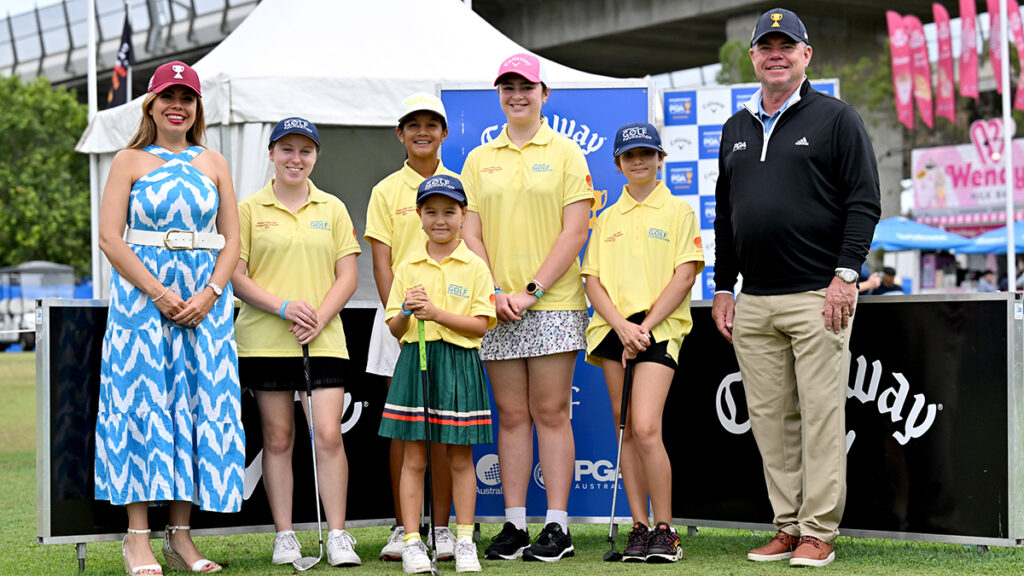
How has the vocational training process changed in recent times?
We changed it up nearly five years ago now. The traditional vocational golf pro could have been a head contractor, a director of golf and that’s where it was for a long time. Some of the great pros from across the country – Bill Exten, Ron Luxton and the Victorsens – I could keep naming them and naming them… Bruce Green. All of them used to do everything. They used to coach, they’d run their shop, they’d sit on match committees. They were the person. As the game started to change and clubs started to change, the contracted pro at some clubs, well, the club took the pro shop back on. That was a lot of change, and everyone thought it was all going one way, but it wasn’t really. The data told us that the bigger clubs wanted to take more control, but there were a lot of little clubs that still contract pros.
Richard Hatt, who’s probably one of the best in the country, he’s still a contracted pro at Royal Melbourne Golf Club. Every model suits what the venue wants. But with the training and the education, where we went was, we thought PGA professionals – our women and men – want to specialise, they don’t want to be generic now. So we started with four streams, which was coaching, game development, business retail and management. I played a big part in that with Geoff Stewart to look at education differently.
At that stage, we didn’t have many PGA professionals managing facilities, and it was more or less the managers, the pros and the superintendents. We had to change the mindset of our older members and bring the new members, the graduates, through thinking about the game differently. We had to build up coaching – you can be a coaching business now, you can be a game developer now, you can focus on beginners, juniors, all abilities. We’re really proud to say where we’ve got to. We’ve got nearly 200 PGA professionals managing facilities.
One scenario is The Lakes Golf Club. When you look at The Lakes, the manager is a PGA professional, the assistant manager is a PGA professional, they’ve got three teaching pros, the shop manager/director of golf is a PGA professional. They went and put in PGA professionals who specialise in that area.
The education lets you specialise in an area. We recently just put a fifth stream on, which is playing, so if someone wants to come through the Membership Pathway Program and graduate, they can go and play, which a lot of great trainees did go out and play – but they can pick that. In the education, a certain number of hours now is focused on generic and then you pick your specialty area. With me, because I’m not a good player, I would go down the management pathway. I could then do a Diploma of Golf Management. I could do a Diploma of Coaching, so then I’ve got a full qualification that’s going to help me get a higher remuneration and put myself in the market.
I’m really proud of the program. We’re a bit of a benchmark, globally. We’re highly regarded by the Americans and Great Britain & Ireland. We sit on a PGA World Alliance; nine PGAs get together and Geoff Stewart and Stephanie Jamieson, who run our education, are always asked to present. We share IP because there’s 60,000-plus PGA professionals globally, 30,000 of them in America. The rest of us are very proud of our membership, but also want to make sure that our membership is getting recognised and we highlight the value of a PGA professional. So it’s not just the generic PGA professional anymore, they’re specialising in all different areas. We’ve got a lot of members that work off-course now. They work for Titleist, they work for Callaway, they’re professional fitters. We’ve got a PGA professional at Commonwealth Golf Club that runs food and beverage.
Everyone thinks you’ve got to be a great player, but if you’ve got the right education and you’ve got passion for the sport, that’s something that we continue to drive. We’ve also seen a really good uplift. It doesn’t sound like a lot, but as our membership grows to nearly 3,000 members, we’ve gone from – roughly 10 years ago – 5.4 percent of our membership were women. We’ve just gone past 8 percent. Our short-term goal is 10, 15 percent, but probably 30 percent is where we’d like to get to.
▶ ▶ ▶
Our events seem not to be on the Official World Golf Ranking’s radar, or certainly not drawing the number of points as other tours. Has the PGA and our tour stepped in there?
Nick Dastey sits on the technical committee for the OWGR, so we’ve got someone sitting right in there. He knows the calculations. Our strategic alliance through DP World, we have a strong voice. So South Africa, Korea, Japan, ourselves, we all have the same problem. We are being heard at the moment. It’s always a very slow process. But we’re at the table. We’re putting our voice and our opinions across because it is critical. For our members to stay at home and play our tours, if they go as well as David Micheluzzi or Kazuma Kobori, they should get recognised. If they’re three-time winners, they shouldn’t still be 400th in the world.
Nick has the technical side of where that is changing and how that is changing. But there’s strong support from the DP World Tour. We feel comfortable that we’re being heard, but any change or to see that review isn’t going to happen overnight. When you see the make-up of the board of the OWGR, it’s getting all those parties aligned and getting them to think
more globally.
▶ ▶ ▶
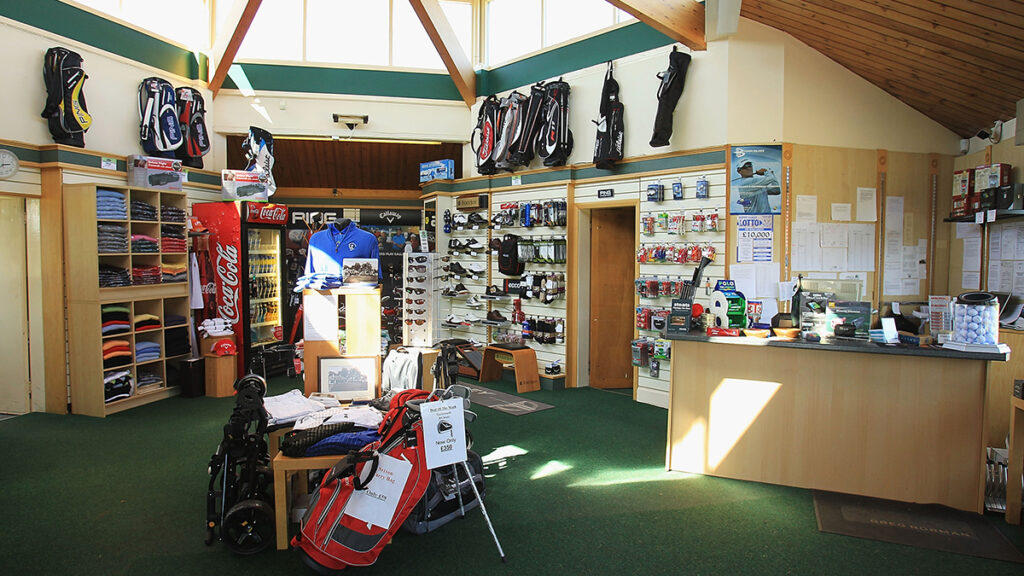
What’s the main complaint you hear from PGA members?
Club pros’ remuneration. And if they’re working at a private club, it’s governance. I’ve just sent a message to the members today, and the biggest two areas we’re working on with our vocational members is remuneration – trying to grow their remuneration, because our current strategy is all about growth – and member value. They’re getting the support, but our members who engage really benefit. We’ve got to build that relationship and that trust with our members to pick up the phone and make an appointment to see one of our member service or state support officers, because there are a lot of positives we can do.
The data that they’re sharing with us now allows us to benchmark. We recently got involved with a member negotiating for a manager’s job in a regional area in Australia, and they offered him a package and he thought it was OK, but another member said, “You should run that past the PGA.” So he did, and our senior state manager got involved. Two meetings later, he ended up with $20,000 more than the offer based on some benchmarking, some data to the club and the value of PGA professionals.
Governance at golf clubs is very hard when they’re turning boards over – and that’s not just for PGA professionals, it’s for superintendents and managers, because there’s been a lot of turnover in managers.
The last thing is work hours and work/life balance. If you said, “Could we get another 250, 300 PGA professionals tomorrow?” At the moment, I’d say, yes, we’d like them, but we’ve got to put them through our program.
We’re putting out about eight to 10 jobs a week, but unfortunately the remuneration’s not there to encourage people to move. So their jobs are then going to non-experienced, non-qualified people to come and work in the industry because some clubs are still looking for minimum wages under the Amusement, Events and Recreation Award, which really frustrates us because my job – and our job – is to make sure that a PGA professional gets recognised for their qualifications, skillsets and membership.
In saying that, there’s a lot of our men and women doing really well, but we’d like to make them all do really well.
Featured image by Peter Tarasiuk
The Latest News
-
December 26, 2024Konstas, Kohli mid-pitch shoulder bump under microscope | cricket.com.au
-
December 26, 2024‘Clown behaviour’: Kohli blasted for ‘pathetic’ exchange
-
December 26, 2024Sports News Today Live Updates on December 26, 2024: India vs Australia BGT 2024-25: Sam Konstas shocks India with his remarkable debut | Watch
-
December 26, 2024‘I think he’s in trouble’: Kohli under fire over ‘ridiculous’ clash with Aussie teen as ban looms
-
December 26, 2024WATCH: Kohli bumps Konstas in fiery MCG clash




